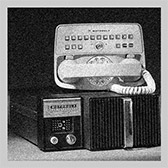Science-fiction becomes reality:
Singapore on the road to becoming the world’s very first Smart Nation
It is hard to imagine how early man lived, bound hopelessly to his desktop.
Today we Whatsapp our friends — groups at a time. We Skype our siblings overseas. We binge-watch Descendants Of The Sun. We live-stream the new Radiohead. We buy shoes and groceries online. We make reservations for dinner and Google-map directions to the secret entrance of restaurant. We tell the world what we’re wearing through Instagram, what we’re thinking through Facebook, what we’re laughing at through Snapchat. We send off emails, finish off documents and send them to the office printer.

We do all of this on our mobile phones, in the Uber we booked, before we even step into the office. Where we are no longer matters — we’re already wearing our tech. We are connected, on the go, 24/7.
Pervasive connectivity has created a culture of immediacy. We want what we want and we want it now. Think: Just five years ago, you would have waited till you got to a dial-up connection to do most of what you enjoy today. Fifteen years ago, this would have been sheer fantasy.
THE INTERNET OF THINGS
Pervasive connectivity — anyone can be connected anytime and anywhere — is not just facilitating your home renovation mood board on Pinterest. It is also fuelling Singapore’s mission to become the world’s first "Smart Nation"
Maximising technological advancement so that the individual and businesses are empowered with more access to data, and so the government can use technology to serve the citizens better, explains the Infocomm Development Authority (IDA). Basically, ensuring Singapore is ahead of the curve, not struggling to keep up with imminent evolution.
We’re already well on the way to becoming this Smart Nation: Ninety per cent of homes have broadband, and many already have fibre. We rank highest globally for smartphone penetration. The government has effectively introduced many electronic services, making it easy and fast to file taxes, borrow library books and renew our passports.
What we are witnessing is the dawn of the Internet of Things (IoT): Machines communicating with machines to accomplish tasks without human intervention. We can already operate our home lights and air-conditioning system using an app on our mobile phones. In April, SMRT announced its joint venture to market, install, operate and maintain driverless vehicles — cars that communicate with other cars to avoid collision — here and across the Asia-Pacific region. A showcase of the vehicle here is expected by the end of the year.
It might sound a lot like ridiculous science-fiction (Skynet alert, anyone?), but the road to the future has always been paved with “ridiculous” ideas. Two decades ago, we would have laughed at such “impossible” things as having your entire music collection in your pocket, or being able to video chat across oceans while waiting for the train, or even the very idea of a find-my-phone app.
Even today, ideas long held as irrefutable fact are being chipped away at. Last year, NASA accidentally discovered they could actually make particles move faster than light.
The future, Smart Nation and IoT isn’t so much about how far we’ve come — it’s about what we’ll test next.
THE NEED FOR SPEED
While we’re waiting for the hyperdrive of our personal Millennium Falcon to kick in, what drives pervasive connectivity is a high-speed and stable network in the palm of our hands. And that requires constant testing and innovation.
You may have seen a short film on television or online where Singtel put its data-streaming capability through an epic network test they called Data ExStream. Professional precision driver and stunt choreographer Jason Tan, and 16-year-old Team Singapore sabre fencer Ywen Lau (who recently became the first Singaporean to pick up a gold medal at the Fencing Cadet & Junior World Championship in France), each wore customised Data Optic Gear that “replaced” their sight as they carried out their tasks.
"The tests involved customised technology and the execution of precision stunts that depended heavily on the network’s upload and download speeds, and any lack of coverage or lag in the network could vastly impair the execution," said Si Cheng Choon, Vice-President of Singtel’s Mobile Core Engineering, Networks division.
"A split-second lag meant whether or not the precision driver would be able to clear the obstacle-filled container yard safety. Never before have we trialled the network under such extreme, intense conditions."
Ultimately, of course, network tests aren’t carried out to ensure Singapore wins an Olympic gold via data-streaming. A small army of Singtel engineers consistently measures the coverage and speed of the network for a better, seamless, mobile user experience.
"In 2015, we were the first in Southeast Asia to launch a Tri-band 4G+ network, consisting of 900 MHz, 1800 MHz and 2600 MHz frequency bands," said Si. "This allowed us to offer even deeper 4G indoor coverage with wider and more consistent network performance across the island."
The telco is now in the process of deploying LTE (Long Term Evolution, or the ability to improve speed to meet greater demand) Category 9 technology for faster surfing speeds of beyond the current standard of 300Mbps.
IT’S ALL ABOUT YOU
A decade ago, humans did not share videos of how they bathed their pet cats. Nor did they walk through retail stores holding up their phones, talking to an invisible audience of thousands.
In 2015, mobile video traffic made up a whopping 55 per cent of total mobile data traffic. With apps like Periscope and Snapchat, and Facebook leaping into the mix with its live streaming feature, the only way is up for video, which is predicted to grow to occupy 80 per cent of mobile data traffic by 2020.
Even as we feed our addiction to Korean dramas, the shenanigans of Westeros, and whatever it is that Frank Underwood is up to now, there is great excitement about Virtual Reality with the launch this year of the Oculus Rift and HTC Vive.
Sure, the Japanese make saving a fake kitten from a ledge look like great fun, but the applications for VR go beyond just gaming: Films would be immersive; a paralysed person could virtually travel to another country. VR is already being used in therapy, treating war veterans for post-traumatic stress disorder by bringing them back into a scenario that is fearful to them, but within a safe environment.
Although there are critics that say so much connectivity creates alienation of the individual, the fact remains that the individual — that’s you — stands to benefit tremendously, beyond the boredom-busting qualities of cat videos.
In hospitals around the world, medical equipment such as insulin pumps and glucose monitors are increasingly WiFi enabled, allowing patients greater mobility (no more being stuck to the bed having vital signs monitored) and less invasive monitoring. For doctors, wireless technology in hospitals gives access to real-time data on patients, and cuts the intervention time if help is critically needed. Even pacemakers can be tracked using wireless telemetry these days.
Advances in connectivity is even changing the way mass media connects with audiences — physically.
Not so long ago, radio hosts could only broadcast from the confines of the studio. Live shows meant having to be wired up and dragging cables around for an outdoor broadcast. These days, wireless technology allows radio deejays and newscasters to report live from anywhere wirelessly, in digital broadcast quality, on the strength of one 4G SIM card — the same one you have in your mobile phone.
It’s a brave new world. And it runs on data connectivity.
THE FUTURE
Each day in 2015, the world created 2.5 quintillion (2,500,000,000,000,000,000) bytes of data. Ninety per cent of existing data was created in the last two years. And it’s not going to slow down anytime soon. In fact, demand for mobile broadband looks likely to grow, with the continued advancement of devices and screen technologies.
In the Cisco Visual Networking Index: Global Mobile Data Traffic Forecast white paper, released in February, it is predicted that by 2020, monthly global mobile data traffic will be 30.6 exabytes (1 quintillion bytes). The total number of smartphones (including phablets) will be nearly 50 per cent of global devices and connections. Monthly mobile tablet traffic will surpass 2.0 exabytes per month.
This has created the need for data to be cost-efficient. According to a study by the International Telecommunication Union (ITU), the United Nations agency for information and communication technologies, mobile surfing in Singapore is already the ninth most affordable in the world — remarkable, considering our mobile technology is one of the most cutting edge globally.
The exponential growth in demand for mobile broadband looks set to continue. Singtel aims to be one of the first operators in the world to deploy 5G, which is touted to be 10 times faster than 4G LTE. To give you an example of what that means, you could soon download an entire Ultra HD movie in 4K resolution in just 10 seconds.
What does a future fuelled by such rapidly developing network technology look like? If futurists are to be believed, the next two decades, powered by 5G, will see us downloading creations from our favourite designers and printing our own clothing, bags and shoes at home using the ubiquitous 3D printer. Networks will allow not just for seeing and hearing, but feeling — the transmitting of emotions through the Internet.
Remember: The iPhone was released just nine years ago. And in those nine years, technology — network, hardware and software — has advanced so rapidly and so broadly, just looking at the original iPhone feels like one’s watching an episode of Growing Up.
Imagine what’s to come.

































